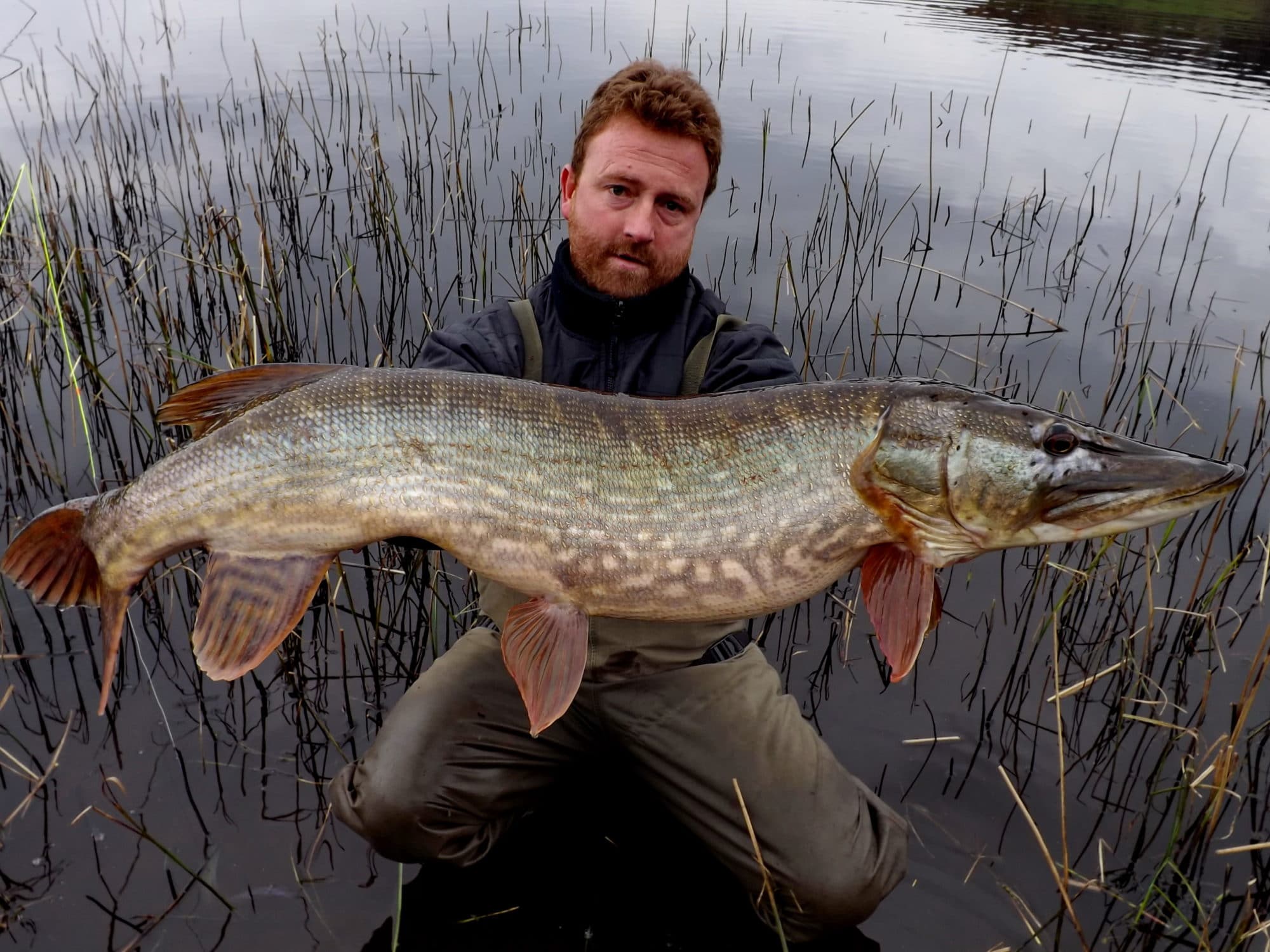Biological Characteristics: Pike Fish

Pike fish are a fascinating group of predators found in freshwater habitats worldwide. Their elongated, torpedo-shaped bodies and sharp teeth make them formidable hunters, while their adaptations allow them to thrive in a variety of environments.
Pike fish exhibit a wide range of physical characteristics. The largest species, the northern pike (Esox lucius), can reach lengths of up to 5 feet (1.5 meters) and weigh over 50 pounds (23 kilograms). Other species, such as the grass pickerel (Esox americanus), are much smaller, typically measuring less than 1 foot (0.3 meters) in length. Pike fish have long, slender bodies with a dorsal fin located far back on their backs. Their coloration varies depending on the species and habitat, but they often have green or brown backs with silvery sides and dark spots or bars.
Pike fish possess several unique adaptations that aid them in their predatory lifestyle. Their sharp, pointed teeth are designed to grip and hold prey, while their streamlined bodies allow them to swim quickly and efficiently. Pike fish also have excellent eyesight and a keen sense of smell, which help them locate prey in murky or low-light conditions.
There are several species of pike fish, each with its own geographical distribution. The northern pike is found in North America, Europe, and Asia, while the grass pickerel is native to North America. Other species include the chain pickerel (Esox niger), found in eastern North America, and the Amur pike (Esox reichertii), found in eastern Asia.
Fishing and Culinary Uses

Pike fishing offers an exciting challenge for anglers, requiring patience and skill. Effective techniques include using live bait such as minnows or worms, casting lures that mimic the movement of small fish, and employing a slow and steady retrieval strategy to entice the pike.
Pike Fishing Techniques
- Bait Selection: Live bait, such as minnows or worms, is a popular choice for pike fishing. Artificial lures that resemble small fish, such as spoons, spinners, and crankbaits, can also be effective.
- Casting Methods: Casting methods vary depending on the fishing location and conditions. Spin-casting and baitcasting are common techniques, allowing anglers to cast lures or live bait over long distances.
- Retrieval Strategies: Pike often strike aggressively, so a slow and steady retrieval is key. Pausing the lure or bait occasionally can also trigger a strike.
Pike fish is a versatile culinary delicacy, offering a mild flavor and firm texture. It can be prepared in various ways, including grilling, frying, baking, and smoking. Pike is a good source of protein and omega-3 fatty acids, making it a nutritious choice.
Pike Culinary Uses
- Pike Fillets: Pike fillets can be grilled, fried, or baked, seasoned with herbs and spices to enhance their flavor.
- Pike Chowder: Pike chowder is a hearty and flavorful soup made with pike fillets, vegetables, and a creamy broth.
- Smoked Pike: Smoking pike adds a unique smoky flavor, making it a popular delicacy.
Pike fishing holds cultural significance in many regions, particularly in Europe and North America. It is a popular recreational activity and a source of livelihood for commercial fishermen. The pursuit of pike has inspired numerous stories, legends, and traditions, showcasing its enduring allure.
Pike fish, with their sleek bodies and sharp teeth, are known for their predatory nature. However, like a skilled basketball player executing a basketball floater , pike fish exhibit remarkable agility when it comes to navigating through the water. Their swift movements and precise strikes are a testament to their exceptional hunting abilities, just as the floater allows basketball players to gently guide the ball over taller opponents.
Pike fish, the predators of the river, lurked beneath the surface, their keen eyes scanning for prey. Their stealthy nature and lightning-fast strikes were legendary. However, their reign was not unchallenged. In the realm of sports, perch basketball had emerged as a captivating spectacle, where players showcased incredible agility and aerial prowess.
Yet, as the sun began its descent, casting long shadows across the river, the pike fish returned to their solitary hunt, their primal instincts guiding them through the twilight.
Pike fish, the predators of the aquatic realm, possess an uncanny ability to float effortlessly in the water column. This remarkable feat, known as floater meaning , is achieved through a combination of physical adaptations and intricate muscular control. Their buoyant swim bladders, coupled with precise fin movements, allow them to maintain a neutral buoyancy, making them nearly invisible to unsuspecting prey.
In the realm of marine predators, the pike fish stands tall, its elongated body slicing through the water with unmatched precision. Its sharp teeth, like daggers, are a testament to its formidable hunting prowess. But beyond the depths of the ocean, another kind of “lift” exists, one that elevates not fish, but basketball players.
Known as the lift basketball meaning , this technique empowers players to soar above the competition, defying gravity to secure victory. And so, from the depths of the sea to the hardwood courts, the concept of “lift” unites both fish and athletes, each striving for their own kind of dominance.
The pike fish, a voracious predator of the freshwater realm, strikes with lightning speed, its sharp teeth tearing through flesh with ease. Its streamlined body propels it through the water with unmatched agility. Pike fish are a testament to the raw power and beauty that nature holds, their presence a constant reminder of the delicate balance that exists within our aquatic ecosystems.